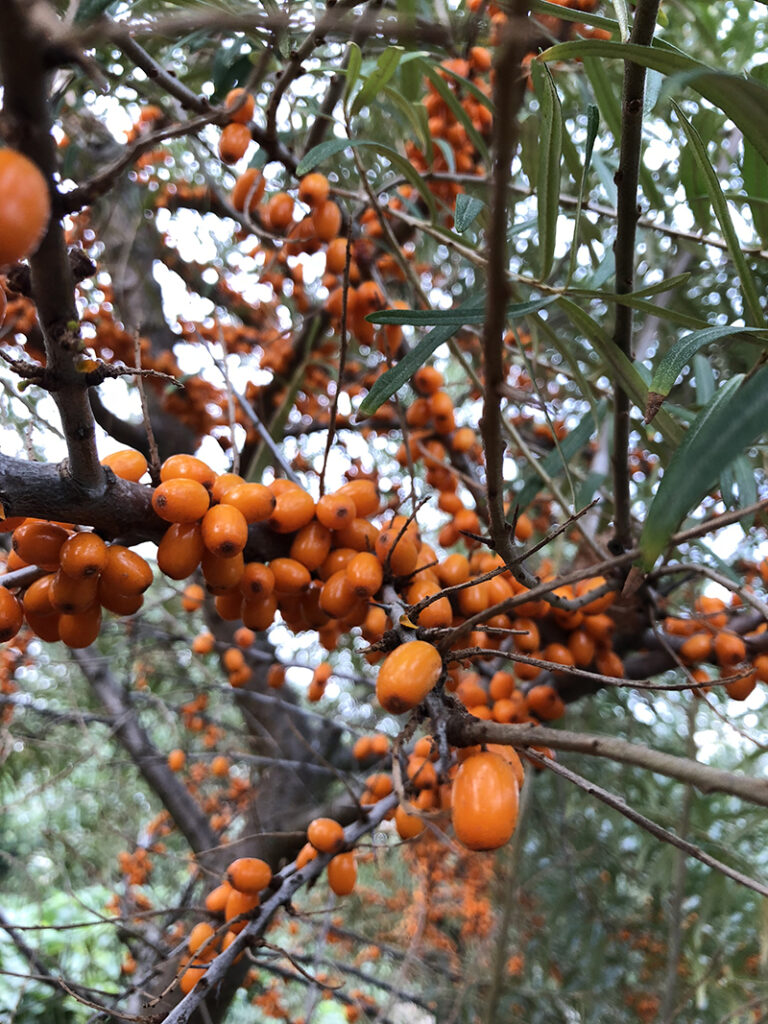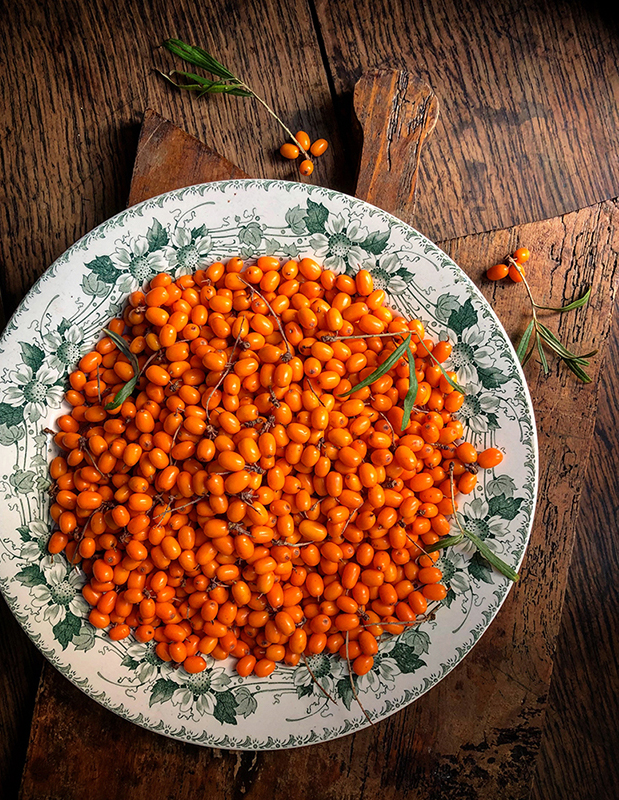
10 Feb Sea Buckthorn jam
I first came into contact with these bright orange berries on one of my trips to Sweden last year. We visited a pick your own farm where the hedges of Sea buckthorn were plenty and laden with fruit. I wondered where these rough looking shrubs with their vicious thorns as dangerous as barb wire normally grow. Sea Buckthorn grows in coastal areas in Europe and Asia, in dunes and on moors. Their Flemish name translates to ‘Dune thorn’, other names are Sand Thorn and Siberian pineapple. Their roughness reflects the landscape in which they thrive. Brisk winds and cold, draught, desolate plains. Their root system is invasive, but improves marginal soil. In some areas the bushes have even been used for soil erosion control and land reclamation projects. It sort off feels like their thorns tell us to let them be, so that they can do good for the surrounding earth, the wildlife and to bring a highly healthy berry to the people that live around them. Birds can nest in the branches, benefiting from the piercing thorns as protection agains predators.
The oval berries are tart, bitter and have little sweetness to them. They have been used for medicinal purposes for centuries, they are full of anti-oxidants, beta-carotene, vitamine C, A and E and they battle inflammation. A concentrated puree from the berries can be used to relief sunburn and some say it could be good for some skin conditions. You could call them a super food, but lets forget about that horrible hipster term shall we? The young leaves can be used for tea because of their amino-acids, fatty acids, minerals and ability to boosting the immune system. An oil is made from the berries and seeds and used for all kinds of ails. In a nutshell, the berries are good for you and the shrub is a good one to have around.
I enjoy the flavour, the mild tartness, their lack of sweetness. I bought a jar of Sea Buckthorn jam on my last trip to Sweden when I visited an apple orchard by the Baltic Sea. Of course because of their location they must have had a lot of Sea Buckthorn bushes around and in their shop they sold a jam called “Marmalat” which was more compote textured than jammy because they added a small amount of apple to the Sea Buckthorn. The jam was spread on toast and the jar empty much too soon so I started to look forward to the new Sea Buckthorn season and searched for a farm that grows the trees.
What do you need
- 5oo g berries, rinsed well
- 500 g jam sugar
- 1/2 lemon, juice only
- 1 eating apple, in small cubes
Method
Prepare some sterilised jam jars and put a saucer in the freezer.
Stew the berries with a splash of water so that they pop and juice is forming, sieve the juice and put aside the pulp for other uses stated above (tea, juice, sorbet, a cocktail mixer).
Add the apple sugar and lemon juice to the pan with the juice and proceed as for making jam. To create a smooth jam you can blend the jam using a stick blender and then proceed to reduce it until it thickens. Test the set by putting a blob of jam on the saucer you put in the freezer earlier, if it sets, you’re done, otherwise test again every 5 minutes.
Pour the hot jam carefully into the jars, close and invert (don’t invert if you don’t usually do this and use other methods)



No Comments